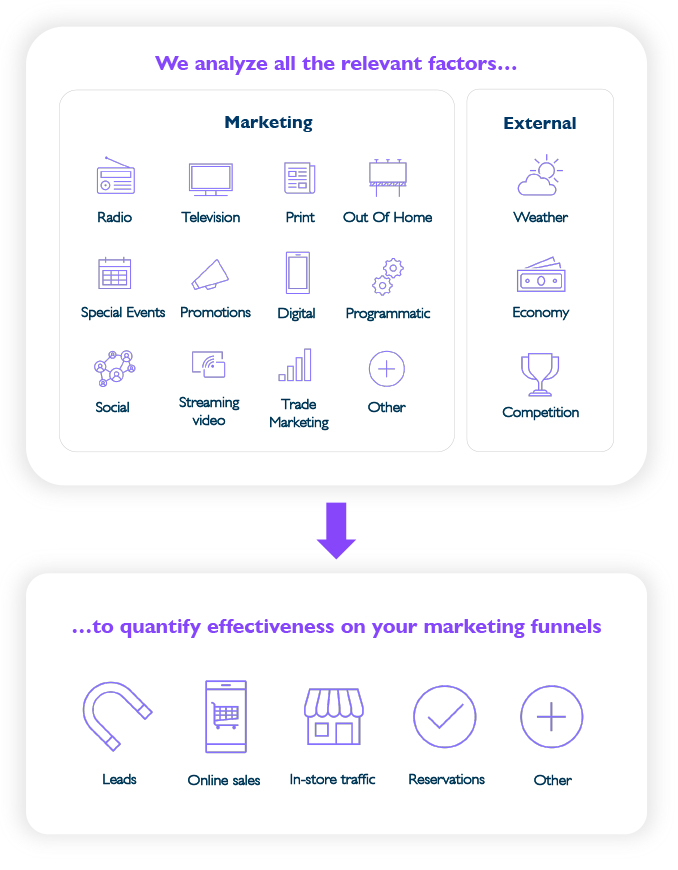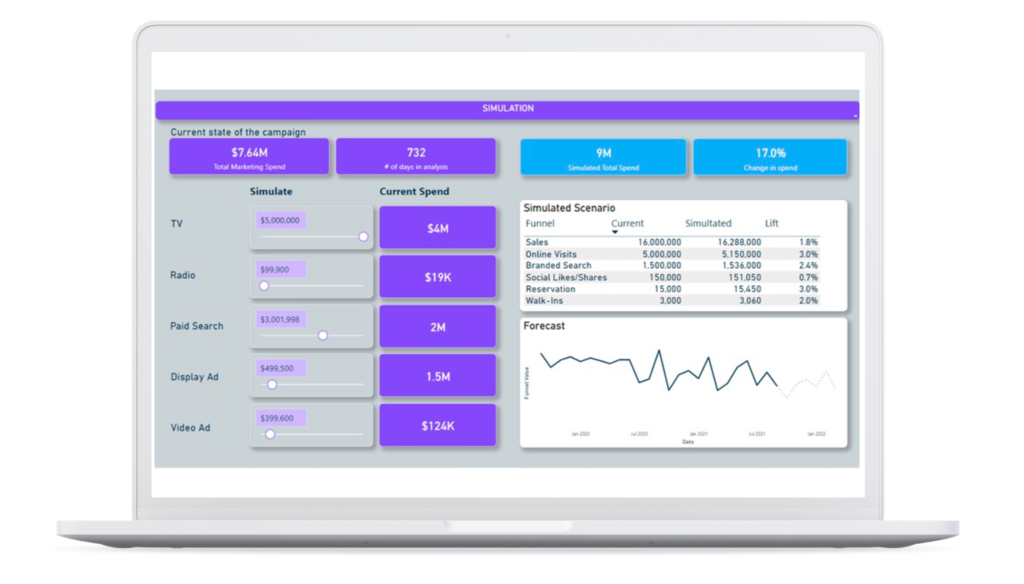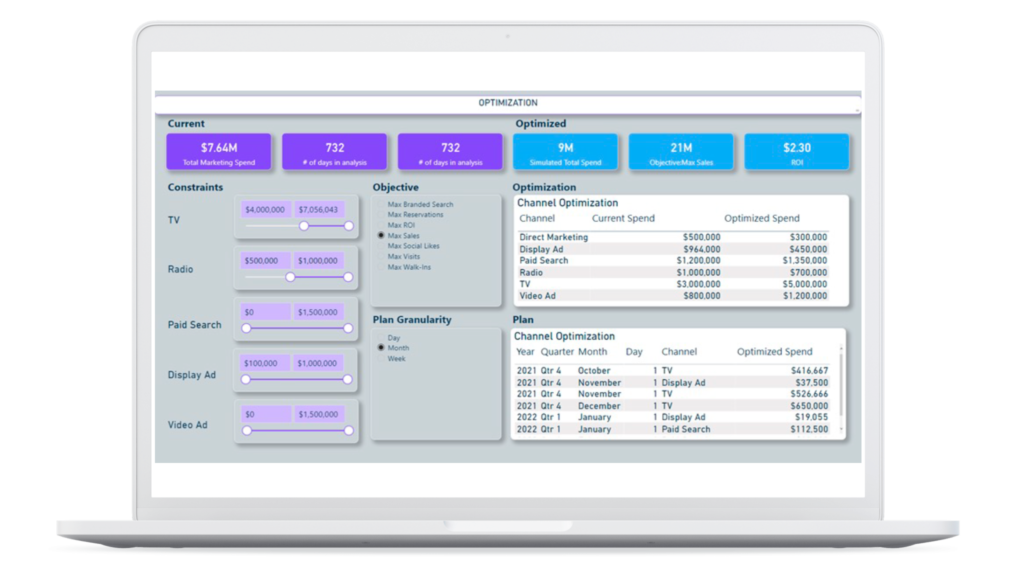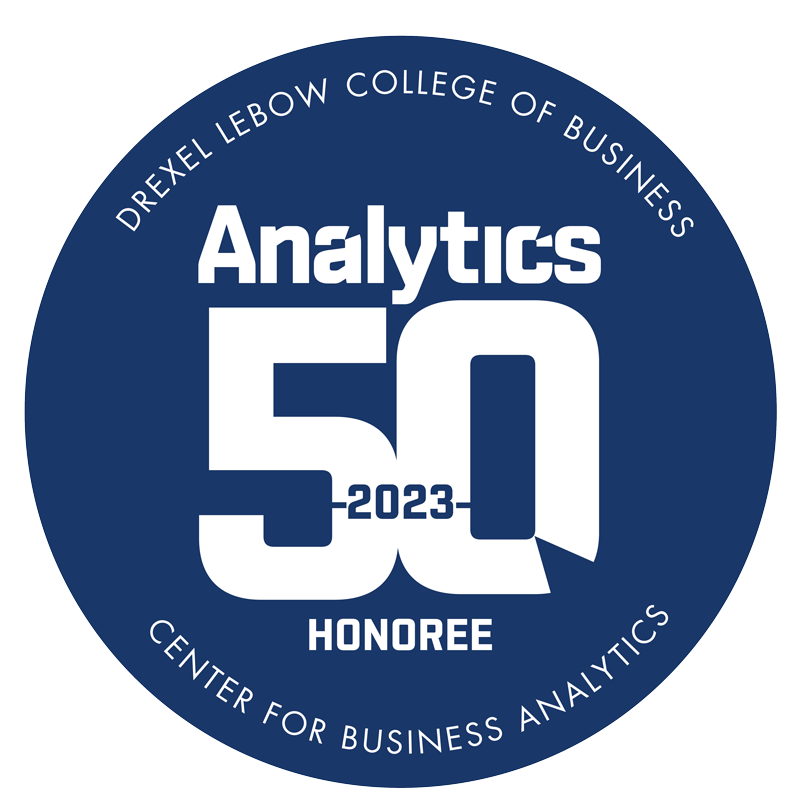
RSLT MMM (Marketing Mix Modeling) will help you analyse, interpret and plan your campaigns, so that you can get more for your money, wherever you’re spending it.
Increase ROI by uncovering which channels play the largest role in getting users to convert offline and online. Our MMM solution will help you evaluate your strategy to determine the effectiveness of individual components, including non-marketing variables from the RSLT Stack, while ultimately providing recommendations and forecasts to increase revenue and sales.
You have questions that we can help you answer
What values does your brand have beyond existing marketing efforts?
How are non-marketing activities affecting sales? (i.e. seasonality, interest rates, etc.)
What is the true ROI from every marketing channel? Which ones perform the best?
Where should you increase spending and where should you reduce it?

How exactly does Marketing Mix Modeling help?
1.
2.
3.
Optimize your budget for maximum effectiveness across your marketing mix, so you can increase sales and have longer-term impact
4.
Learn how to phase your marketing spend to take advantage of seasonal opportunities and trends.
5.
6.
Measure your strategy across channels and tactics, rather than looking at each data source individually.
The RSLT modeling process
We learn what we need to know about your products, this part is crucial because it allows us to select the most effective modeling strategy to reach your goals.
We collect marketing data through APIs and/or flat files and source non-marketing data from the RSLT Stack. Identify incomplete, incorrect and inaccurate data. Clean and fill in missing values with a backed up data science methodology approach.
Our distinctive advantage resides in how sophisticated our statistical methodology is and how automated it is. Our algorithms enable us to deliver detailed insights at scale at a minimal cost, and our monitoring system keeps models optimized between model refreshes. We fit, evaluate and re-adjust until the optimal model is found.
See robust insights on past marketing strategies and run simulations and optimizations to reach your goals (maximum sales, visits, calls, etc.) based on your constraints, so you know where and how much to invest to get the maximum impact.
We learn what we need to know about your products, this part is crucial and helps us choose the most effective way in approaching the modeling process to reach your goals.
We collect marketing data through APIs and/or flat files and source non-marketing data from the RSLT Stack.
Identify incomplete, incorrect and inaccurate data. Clean and fill missing values with a backed up data science methodology approach.
Our distinctive advantage resides in how sophisticated our statistical methodology is and how automated it is. Our algorithms enable us to deliver detailed insights at scale at a minimal cost, and our monitoring system keeps models optimized between model refreshes. We fit, evaluate and re-adjust until the optimal model is found.
See robust insights on past marketing strategies and run simulations and optimizations to reach your goals (maximum sales, visits, calls, etc.) based on your constraints, so you know where and how much to invest to get the maximum impact.

Simulation/Forecast
Optimization



